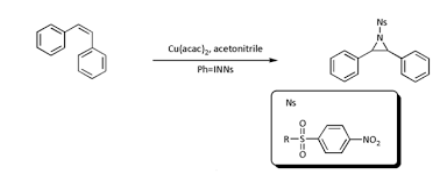In chemistry, moderate or moderate activity is a temporary, high-energy, highly active molecule. When produced by a chemical reaction, it will quickly convert into a stable molecule. Only in rare cases can these compounds be separated and retained, e.g. low temperatures, matrix separation. When their presence is demonstrated, active coordinators can help explain how chemical reactions occur.
What are reaction intermediates?
They are short-lived (10–6 seconds to a few seconds). The most effective chemical species in which most organisms occur are called reaction intermediates. This is produced by breaking the solid bond of the substrate. The reaction intermediate rapidly transforms into a stable molecule when produced by chemical reactions. Only in rare cases, such as low temperatures or matrix fragmentation, intermediate reaction compounds can be isolated and retained.
For example,
Tert-butyl carbocation, ethyl carbocation, acetaldehyde carbanion, chlorine-free radical, benzyl free radical, phenyl free radical, dichlorocarbene, etc.
Explain the stability of carbocation intermediates?
A carbocation is an ion with a well-charged carbon atom. A carbocation is very poor with electrons, so anything that gives electron density to the centre of electron poverty will help to stabilize it. Conversely, carbocation will be rendered ineffective by the electron withdrawal group.
Alkyl groups donate electrons and intensify carbocation due to the fact that the electrons surrounding neighbouring carbon are attracted to good charging nearby, thereby reducing the electron emission of well-charged carbon. What this means is that, in general, modified carbocations are much more stable: tert-butyl carbocation, for example, is more stable than isopropyl carbocation. Basic carbocations are very stable and are rarely seen as areas of reaction; methyl carbocation is even more stable.
Carbocation rearrangements
To attain stability, the ions show some rearrangements.
Carbocations typically experience redesign reactions from slightly more stable to more stable or more stable structures with constant values of more than 109 / sec. This fact encompasses synthetic methods in many compounds, so it is important to consider carbocation reorganization at any time during construction. It is possible for a neighbouring hydrogen atom or methyl group to switch to carbocation to create a stable medium. In the 1,2-hydride shift shown below, the second carbocation rearranges the highest carbocation. Numbers 1,2, and- refer to the immediate reorganization area, not noun numbers.
Thus the order of stability for carbocations is :
tertiary > secondary > primary > methyl.
Types of reaction intermediates
There are six types of intermediate reactions: carbocation, carbanion, free radicals, carbenes, nitrenes, and benzyne. These intermediates are usually produced during the chemical decomposition of chemical compounds.
Salient features of intermediate reactants
- These intermediaries do not satisfy the Lewis octet law, other than carbanion, which leads to significant recycling.
- This type is usually produced during the chemical decomposition of a chemical compound.
- It is often possible to confirm the existence of this type using spectroscopic methods.
- Cage results should be considered.
- It can be difficult to differentiate from a state of transformation due to the convergence or intensity of resonance.
- Chemical trapping is used to ensure presence.
What are nitrenes?
- Nitrenes are uncharged, electron-deficient, monovalent nitrogen species.
- And are isoelectronic with carbenes.
- All nitrogen atoms in nitrenes have a set of electrons.
Let’s talk about their stability.
- Nitrenes are highly reactive in nature and cannot be isolated
- But they can be trapped by reaction with carbon monoxide, which yields isocyanate.
- Nitrenes can also be trapped by ethylene.

Conclusion
From this, now we know how unstable organic compounds are stable in the presence of Intermediates. We have discussed different intermediates and their undergoing reactions. This has given you a brief idea of reaction intermediates and carbocation stability, which will help you in further studies of organic chemistry.
 Profile
Profile Settings
Settings Refer your friends
Refer your friends Sign out
Sign out












